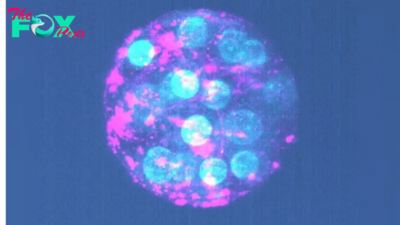Health
Scientists find secret 'back door' flu viruses use to enter cells
Most flu viruses enter human cells through a single entryway — but new research has revealed a "back door" some germs can use to more easily infect cells and jump between species.
Seasonal iNFLuenza viruses infect about 1 billion people each year. Typically, these flu viruses enter our cells by binding to sugar molecules, called sialic acids, on the surfaces of cells. This triggers a process that moves the virus into the cell, where it can then replicate.
Like human flu viruses, many flu viruses that infect animals use sialic acids to enter host cells. However, some use a different entryway, called the major histocompatibility complex class II (MHC-II). Scientists had speculated that there might be flu viruses that could use both these routes, but none had ever been discovered — until now.
In a study published July 15 in the journal Nature Microbiology, researchers examined several subtypes of flu viruses to see whether any of them showed an ability to use both routes. They used two types of human cells: one with no detectable surface MHC-II expression and one with high levels of expression. "Expression" refers to the process by which cells make proteins.
Related: H5N1: What to know about the bird flu cases in cows, goats and people
The scientists exposed the cells to virus-like particles designed to resemble three different subtypes of flu viruses that have previously caused flu epidemics in humans: H1N1, H3N1 and H2N2.
The researchers saw that 10 times as many H2N2 lookalikes were able to enter cells with MHC-II than could enter MHC-II-deficient cells. That's despite both these cell types' having the same levels of sialic acids on their surfaces.
-

 Health1h ago
Health1h agoHow Colorado is trying to make the High Line Canal a place for everyone — not just the wealthy
-

 Health10h ago
Health10h agoWhat an HPV Diagnosis Really Means
-

 Health16h ago
Health16h agoThere’s an E. Coli Outbreak in Organic Carrots
-

 Health1d ago
Health1d agoCOVID-19’s Surprising Effect on Cancer
-

 Health1d ago
Health1d agoColorado’s pioneering psychedelic program gets final tweaks as state plans to launch next year
-

 Health2d ago
Health2d agoWhat to Know About How Lupus Affects Weight
-

 Health5d ago
Health5d agoPeople Aren’t Sure About Having Kids. She Helps Them Decide
-

 Health5d ago
Health5d agoFYI: People Don’t Like When You Abbreviate Texts



























